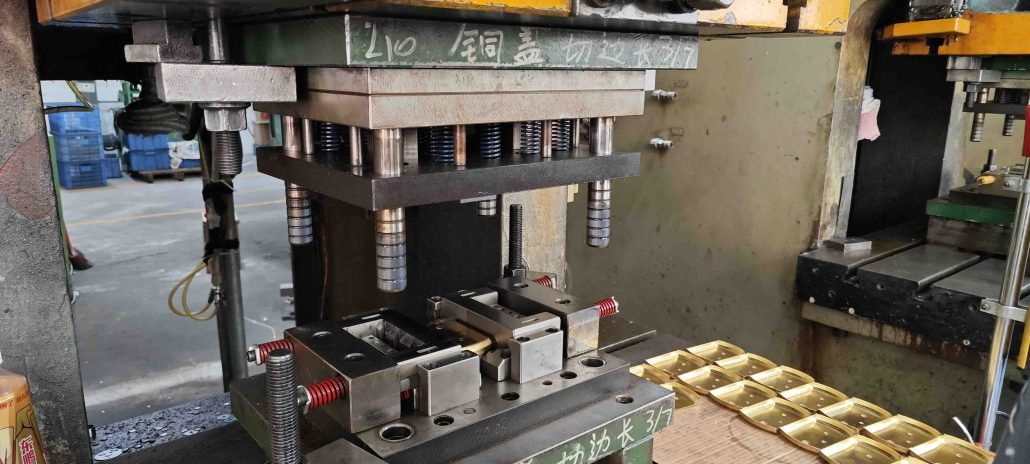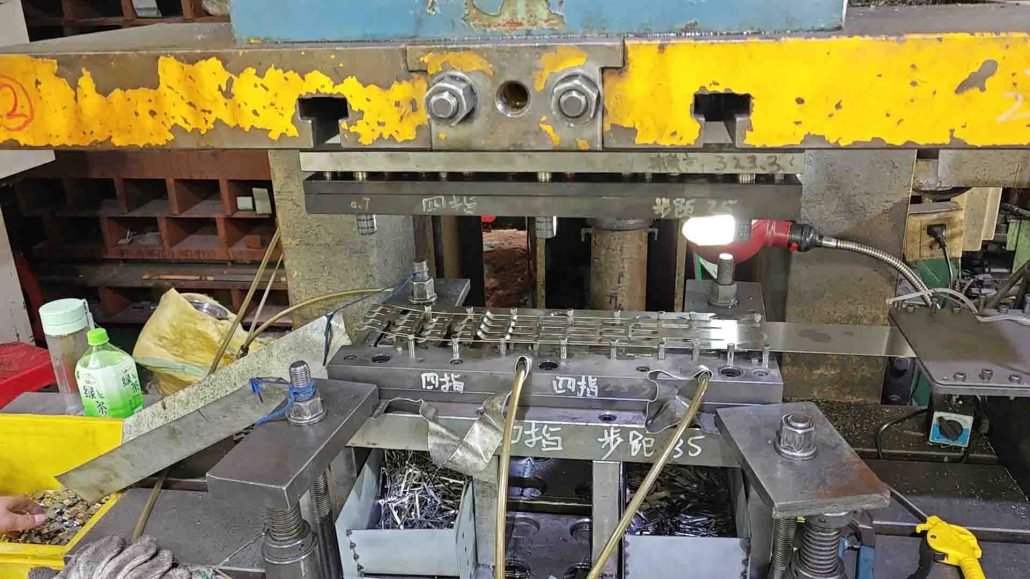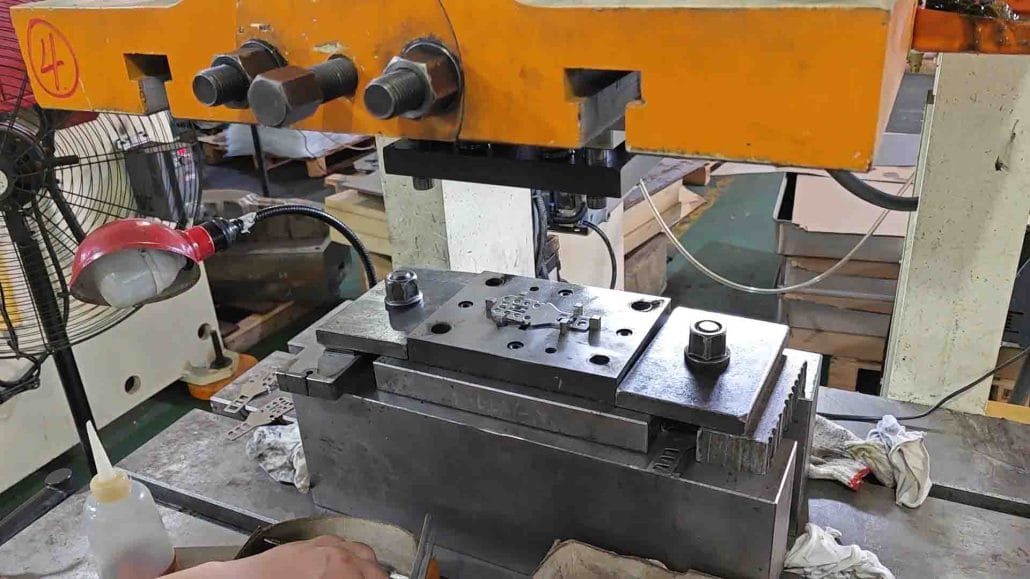Metal stamping parts are an integral part of many industries, providing a cost-effective and efficient way to produce high-quality metal components. In this article, we explore the metal stamping process, its cost, applications, and die design. We also answer some frequently asked questions about metal stamping parts.
Metal stamping parts are metal components that are formed through a process known as metal stamping. This process involves the use of a stamping press, which applies pressure to a metal sheet or strip to create the desired shape or form. The metal stamping process is widely used in the manufacturing industry to produce a variety of metal parts, including automotive parts, electronic components, and household appliances.

The Metal Stamping Process
The metal stamping process is a versatile and efficient way to produce high-quality metal components. It involves a series of steps, including design, material selection, cutting, forming, and finishing.
- Design: The first step in the metal stamping process is the design of the part. This involves determining the specifications of the part, including its shape, size, and thickness. Design is an important step as it dictates the final product’s functionality, aesthetics, and structural integrity.
- Material Selection: The next step is selecting the appropriate material for the part. The material used will depend on the requirements of the part, such as strength, flexibility, and corrosion resistance. The most commonly used materials in metal stamping include aluminum, brass, copper, stainless steel, and carbon steel.
- Cutting: The metal sheet or strip is cut into the desired shape and size using a cutting tool. The cutting process is usually done using a shear or a laser cutter, depending on the material’s thickness.
- Forming: The metal is then formed into the desired shape using a stamping press. This involves applying pressure to the metal using a die, which shapes it into the desired form. The stamping press can be a mechanical, hydraulic or servo press, depending on the part’s complexity and the production volume.
- Finishing: The final step in the metal stamping process is finishing. This involves removing any sharp edges, burrs, or other imperfections from the part. The finishing process can include deburring, sanding, polishing, and coating to enhance the part’s appearance and durability.
Cost of Metal Stamping Parts
Metal stamping is a cost-effective way to produce large quantities of high-quality parts. However, it’s important to keep an eye on costs to ensure that you’re getting the best value for your money. In this article, we’ll provide some tips for saving money on metal stamping parts.
1. Optimize Your Design
The design of your metal stamping parts can have a big impact on the cost. Complex designs require more time and resources to produce, which can drive up the cost. To save money, it’s important to optimize your design for manufacturability. This means simplifying the design and minimizing the number of steps required to produce the part.

2. Choose the Right Material
The material you choose for your metal stamping parts can also impact the cost. Some materials are more expensive than others, so it’s important to choose a material that meets your requirements while also being cost-effective. Additionally, using recycled or reclaimed materials can be a more sustainable and cost-effective option.
3. Minimize Waste
Waste can add up quickly in metal stamping, so it’s important to minimize it as much as possible. This can be accomplished by optimizing the design, choosing the right material, and ensuring that the stamping process is as efficient as possible.
4. Work with a Reputable Supplier
Working with a reputable metal stamping supplier can also help you save money. A good supplier will have the expertise to help you optimize your design, choose the right material, and minimize waste. They may also have access to bulk discounts on materials and other cost-saving measures.
5. Consider the Total Cost
When evaluating the cost of metal stamping parts, it’s important to consider the total cost, not just the cost per part. This includes factors such as tooling costs and shipping costs. By considering the total cost, you can make a more informed decision and ensure that you’re getting the best value for your money.
By following these tips, you can save money on metal stamping parts without sacrificing quality. For more information on metal stamping and how it can benefit your business, contact a reputable supplier today.
Metal Stamping Die Design
Designing the metal stamping die is a critical step in the metal stamping process. The die is the tool that shapes the metal into the desired form or shape. The die design must take into account several factors, including the material being used, the complexity of the part, and the production volume. A well-designed die can help to reduce the production time and costs, while ensuring the quality and consistency of the finished product.
The die design process involves several steps, including:

- Determining the part specifications: The first step in the die design process is to determine the specifications of the part. This includes its shape, size, and thickness. This information is used to design the die and ensure that it can produce the desired part accurately.
- Material selection: The material used to make the die is an essential factor in its design. The die material must be strong, durable, and able to withstand the high pressures and temperatures involved in the stamping process. Common materials used for dies include tool steel, carbide, and high-speed steel.
- Die design: The next step is to design the die. This involves creating a 3D model of the die using computer-aided design (CAD) software. The design must take into account the part specifications and the material being used to ensure that the die can produce the desired part accurately.
- Die manufacturing: Once the die design is complete, the die is manufactured. The manufacturing process can involve several steps, including cutting, drilling, and grinding. The goal is to create a precise, high-quality die that can produce the desired part accurately.
- Die maintenance: After the die is manufactured, it must be maintained to ensure that it continues to produce high-quality parts. Maintenance can involve several activities, including cleaning, lubrication, and repair.
Overall, the die design is a critical step in the metal stamping process. A well-designed die can help to ensure the quality and consistency of the finished product while reducing production time and costs.
Applications of Metal Stamping Parts
Metal stamping parts are used in a wide range of applications, including:

- Automotive industry: Metal stamping parts are used in the production of cars, trucks, and other vehicles. These parts include engine components, body parts, chassis parts, and electrical components.
- Electronics industry: Metal stamping parts are used in the production of electronic components, such as circuit boards and connectors. These parts require high precision and tight tolerances to ensure their functionality and reliability.
- Household appliances: Metal stamping parts are used in the production of household appliances, such as refrigerators, washing machines, and dryers. These parts include door handles, hinges, latches, and other structural components.
- Aerospace industry: Metal stamping parts are used in the production of aircraft components, such as wings, fuselages, and landing gear. These parts require high strength, durability, and resistance to extreme temperatures and pressures.
Overall, metal stamping parts are an essential component of many industries, providing a cost-effective and efficient way to produce high-quality metal components. With advancements in technology and materials, metal stamping is poised to continue playing a vital role in the manufacturing industry for years to come.
FAQ
Metal stamping is a manufacturing process that involves the use of a stamping press to create metal parts. The process involves cutting, forming, and finishing a metal sheet or strip to create the desired shape or form.
The most commonly used materials in metal stamping include aluminum, brass, copper, stainless steel, and carbon steel. The material used will depend on the requirements of the part, such as strength, flexibility, and corrosion resistance.


